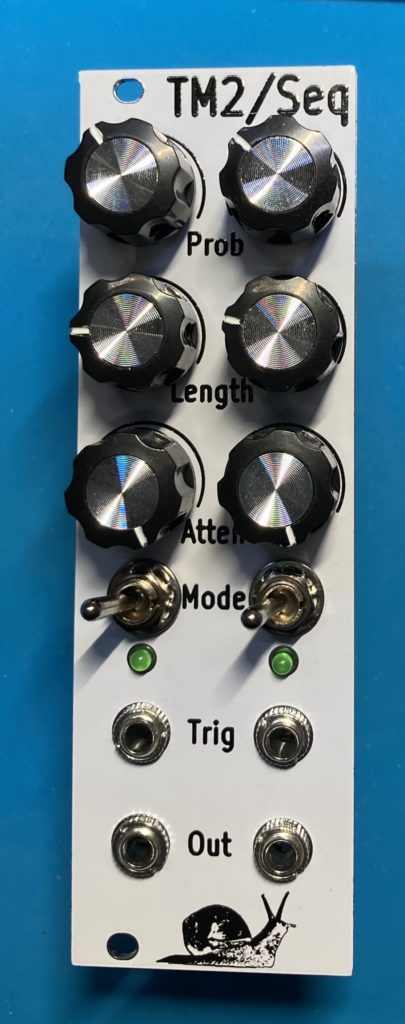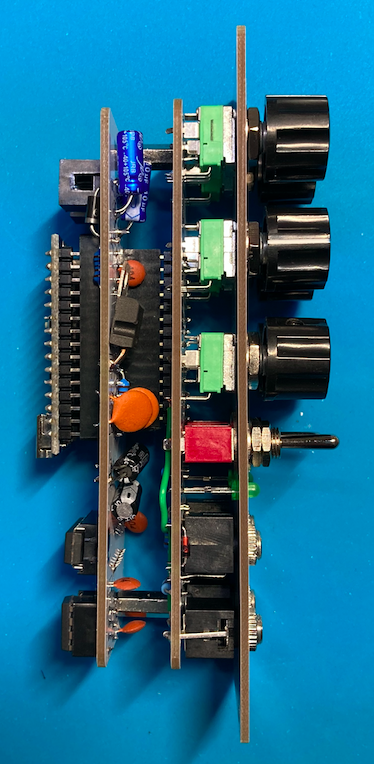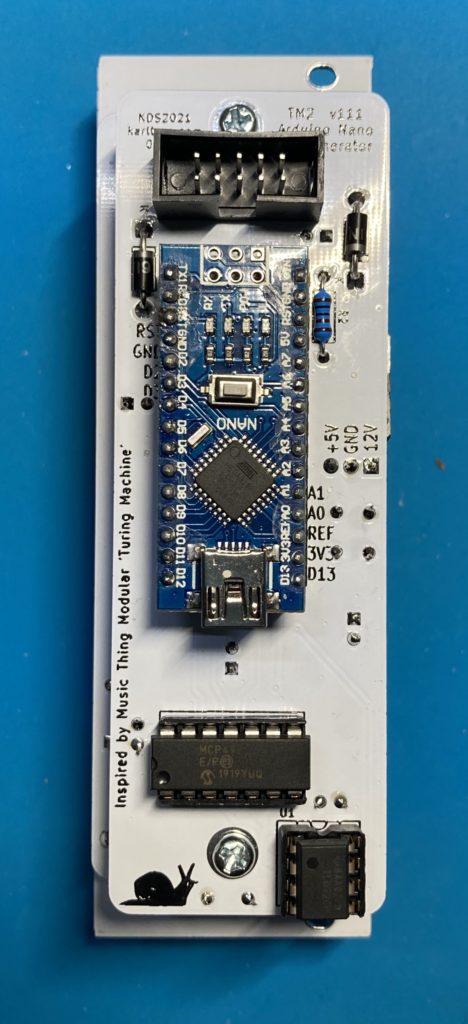The TM2 is a dual random sequencer, inspired by Music Thing Modular’s Turing Machine. I loved the 2HP TM and wanted a dual version with a somewhat different interface. This is an 8HP, 3U module. No relation to the original.
The idea is a random sequence of voltages, a knob for probability of change, a knob for sequence repeat length, and a knob for attenuating the final voltage.



With Probability set to 0, you’ll get a repeating sequence. With Probability set to 1, you’ll get a totally random sequence. On mine it’s a 50% chance of a note being replaced with a random value.
There’s a switch to go to a deterministic mode where the Prob knob becomes a position in a predetermined 256 note script. Set the length to something small and it’s a semi-random arpeggiator (two of them). The left trig normals to the right, so you can run two things on one clock, or sum the outputs on your cv mixer for a polyrythm sequence. No quantizer here, bring your own.
Neat trick patch: a random sequence, then locked in place with prob=0 or deterministic mode, can be run through a comparator to gate high when it surpasses some voltage. Use that in a VCA to gate the triggers and you’ve got a quantized random rhythm generator!
The core is an Arduino Nano, with code available for your tinkering. This version is designed to work with a DAC, the MCP4922 gives very stable and quick control voltages. Hex files are posted at my github, and the DAC SPI library you would need to compile with is here.
| Price | |||
| PCB + Panel | $25 | ||
| Full Kit (incl PCB and Arduino) | $110 | ||
| Built and Tested | $160 |
BOM and build order PDF is here. and an ibom html.
Demo Video is kind of long. Lots to do with a CV Seq.
Power draw is about 36 mA on the +12V and 5 mA on the -12V.
Depth is 40mm due to a two PCB stack and the Arduino in a socket.
Build Troubleshooting:
MCP4922 is a 14 pin device that needs 5 V. It outputs on pin 10 &14, about 3V if you set all knobs full left, then send in a trigger.
Make sure you send enough voltage to trigger the arduino’s logical high; the LED could light at a lower voltage and not register as a real clock.
2021-05-15 New version of the .INO and the .HEX on my github. This newer version has two changes to make debugging easier. Pin D12 now goes high, so you can find 5V there and know that you’re running the software. Also one first clock trigger goes on bootup, so the outputs should have ‘some’ value before any clocks come in.